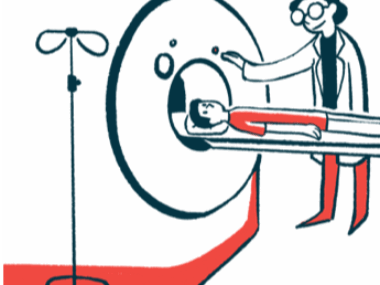ECTRIMS 2023: Early high-efficacy DMTs may help slow MS disability
RRMS patients on early treatment experience slower disability progression
Written by |
People with relapsing-remitting multiple sclerosis (RRMS) who had an early start on high-efficacy disease-modifying therapies (DMTs) experience slower disability progression compared with those on escalation treatment, according to recent research.
The study, which followed patients for up to 10 years, supports starting high-risk RRMS patients on highly effective therapies as soon as possible to minimize neurological damage and improve outcomes.
“These findings may drive the treatment decisions of physicians, especially in naïve [never been treated] patients with poor prognosis factors,” Pietro Iaffaldano, MD, associate professor of neurology at the University of Bari, in Italy, said in an oral presentation at the 9th joint meeting of the European and American Committees for Treatment and Research in Multiple Sclerosis (ECTRIMS-ACTRIMS), held Oct. 11-13 in Milan and online.
His talk was titled “Ten-year comparison of disability trajectories in multiple sclerosis patients treated with early intensive and escalation approach: a study from the Italian MS Register.”
Growing number of high-efficacy DMTs have become available to patients
In recent years, a growing number of high-efficacy DMTs (HE-DMTs), or ones believed better at slowing disease progression, have become available to MS patients.
Still, in many instances, physicians will employ an escalation approach, where patients are first given a lower-efficacy treatment, only switching to an HE-DMT when they show signs of disease activity such as relapses, new brain lesions, or disability progression.
This may be due in part to safety concerns since HE-DMTs are often associated with more severe side effects and can be more costly.
Accumulating evidence indicates that starting patients on HE-DMTs soon after diagnosis, called early intensive treatment (EIT), has long-term benefits for MS patients, helping to delay disability accumulation, prevent relapses, and lower the risk of converting to secondary progressive MS.
Yet, “whether patients initiating HE-DMTs as their 1st therapy derive a greater long-term benefit on disability progression … remains a matter of debate,” Iaffaldano said in the presentation.
As such, Iaffaldano and colleagues further investigated the long-term effects of EIT compared with an escalation approach on disability trajectories among patients with RRMS.
The analysis included data from RRMS patients housed in the Italian MS Registry who had at least five years of follow-up and were prescribed their first DMT within three years of disease onset.
Each participant on EIT was matched to a participant on escalation therapy based on clinical and demographic characteristics at the time of initiating their first MS therapy. This resulted in a final group of 908 patients on EIT and 908 on escalation therapy.
EIT involved receiving a HE-DMT as a first-line treatment, which included Gilenya (fingolimod), Tysabri (natalizumab), mitoxantrone, Lemtrada (alemtuzumab), Ocrevus (ocrelizumab), rituximab, or Mavenclad (cladribine).
Our results further confirm that an early start of HE-DMTs [high-efficacy disease-modifying therapies] may enhance long-term clinical outcomes by minimizing the accumulation of neurological damage.
Patients on escalation strategy given lower-efficacy therapies first for 1 year
Patients on the escalation approach were first given lower-efficacy therapies — such as glatiramer acetate (Copaxone or generics), interferon therapies, azathioprine, Aubagio (teriflunomide), or dimethyl fumarate (Tecfidera or generics) — for at least one year and then switched to HE-DMTs.
Disability was monitored using the Expanded Disability Status Scale (EDSS), assessed every six months, for up to 10 years. The median follow-up time was 8.4 years, and patients on the escalation group switched to a HE-DMT after a median of 4.3 years on low-efficacy drugs.
Results indicated the mean annual increase in EDSS scores was significantly higher in the escalation therapy group compared with the EIT group, reflecting faster disability accumulation with the less aggressive treatment approach.
“The greater benefit from the EIT strategy continues to increase over time,” despite the fact that those on escalation therapy eventually switched to an HE-DMT, Iaffaldano noted.
Specifically, disability progression was 0.16 EDSS points slower with EIT in the first year, 0.46 points slower at year five, and 0.63 points slower at year 10 compared with escalation therapy.
Patients given escalation therapy at higher risk of worsening disability
Consistently, patients given escalation therapy were at a significantly higher risk of reaching a confirmed disability worsening event, defined as a clinically relevant EDSS increase lasting more than six months, than those given EIT. This included a 55% higher risk of relapse-dependent progression and a 22% higher risk of progression independent of relapse activity.
“Our results further confirm that an early start of HE-DMTs may enhance long-term clinical outcomes by minimizing the accumulation of neurological damage,” Iaffaldano said.
The scientist noted “further studies are needed to establish the long-term safety risks of the EIT approach,” despite its potential benefits.
Note: The Multiple Sclerosis News Today team is providing in-depth coverage of the 9th joint ECTRIMS-ACTRIMS meeting Oct. 11-13. Go here to see the latest stories from the conference.







